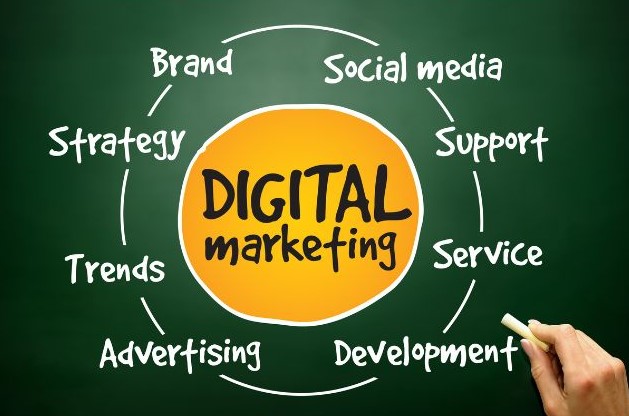

The Ultimate Guide to Digital Marketing for Third-Party Sellers
In the dynamic world of e-commerce, third-party sellers face the challenge of standing out amidst the digital noise. To thrive in this competitive landscape, mastering digital marketing is non-negotiable. This comprehensive guide will equip you with the knowledge and strategies to elevate your digital marketing game, covering essential aspects such as social media marketing, search engine optimization (SEO), and paid advertising on third-party platforms.
Understanding the Digital Landscape: A Primer for Third-Party Sellers
Before diving into specific strategies, let’s understand the digital landscape. E-commerce success hinges on visibility, and digital marketing is the engine that drives it. As a third-party seller, your online presence is your storefront, and effective digital marketing ensures potential customers not only find you but also choose you over competitors.
Social Media Marketing: Building Your Brand Beyond Borders
Social media platforms have become indispensable tools for digital marketing. For third-party sellers, platforms like Instagram, Facebook, and Twitter offer a direct line to potential customers. Share visually appealing content, engage with your audience, and leverage social commerce features to turn likes into sales.
1. Creating a Social Media Content Calendar
Consistency is key on social media. Develop a content calendar that aligns with your brand and product promotions. This ensures a steady stream of engaging content that keeps your audience captivated.
2. Utilizing Social Commerce Features
Platforms like Instagram and Facebook offer built-in shopping features. Optimize your product listings for seamless integration, allowing users to make purchases without leaving the platform.
3. Running Targeted Ads
Invest in targeted social media advertising. Define your audience based on demographics, interests, and online behavior. This precision ensures your ads reach the right people, maximizing their impact.
GET EXCLUSIVE ACCESS TO OUR EXPERTS THIRD PARTY PLATFORM SELLERS' TIPS AND ADVICE:
- Get AHEAD of the Competition.
- FREE Membership to Sarah’s Weekly Insiders secrets.
- FREE tailored resources and gifts.
- PLUS qualify to receive personal email support.

* We respect your privacy. We will not spam you.
Search Engine Optimization (SEO): Climbing the Digital Ranks
In the vast digital landscape, search engines are the compass guiding users to their desired destinations. Optimizing your third-party listings for search engines is a fundamental aspect of digital marketing.
1. Conducting Keyword Research
Identify relevant keywords related to your products. Use tools like Google Keyword Planner to understand search volumes and choose keywords strategically. Integrate these keywords into your product titles, descriptions, and backend keywords.
2. Optimizing Product Titles and Descriptions
Craft compelling, keyword-rich product titles and descriptions. This not only enhances your visibility on search engines but also entices potential customers. Strike a balance between SEO optimization and readability.
3. Building Quality Backlinks
Earn high-quality backlinks to your product listings. Collaborate with bloggers, influencers, or industry publications for features, reviews, or mentions. Quality backlinks signal to search engines that your content is valuable and trustworthy.
Paid Advertising on Third-Party Platforms: Investing for Impact
While organic strategies are crucial, paid advertising on third-party platforms provides an additional boost. Understand the various options available and tailor your approach to align with your goals.
1. Sponsored Product Listings
Most third-party platforms offer sponsored product listings. Invest in these to ensure your products appear prominently in search results, increasing the likelihood of clicks and conversions.
2. Display Advertising
Explore display advertising options on the platform. These visually appealing ads can be strategically placed to capture the attention of users browsing related products.
3. Setting Budgets and Monitoring Performance
Establish clear budgets for your paid advertising campaigns. Regularly monitor performance metrics such as click-through rates (CTR) and return on ad spend (ROAS). Adjust your strategies based on data insights.
Integrated Approach: Crafting a Holistic Digital Marketing Strategy
Digital marketing is most effective when approached holistically. Integrate your social media efforts, SEO optimizations, and paid advertising into a cohesive strategy.
1. Consistent Branding Across Platforms
Maintain a consistent brand image across all digital touchpoints. From your social media profiles to product listings, cohesive branding fosters trust and recognition.
2. Analyzing Data for Informed Decisions
Utilize analytics tools to gather insights into customer behavior, conversion rates, and the performance of your marketing efforts. Data-driven decision-making ensures continuous improvement and adaptation to market trends.
3. Leveraging User-Generated Content
Encourage customers to share their experiences through reviews, photos, and testimonials. User-generated content adds authenticity to your brand and can be repurposed for marketing purposes.
Conclusion: Empowering Third-Party Sellers in the Digital Arena
In the fast-paced world of e-commerce, digital marketing is the lifeline that keeps third-party sellers afloat and thriving. By mastering social media marketing, SEO, and paid advertising on third-party platforms, sellers can enhance their online visibility, attract a broader audience, and ultimately boost sales.
As you embark on this digital marketing journey, remember that adaptation is key. Stay informed about industry trends, consumer behaviors, and platform algorithms. By continuously refining your strategies and staying ahead of the curve, you’ll position yourself as a formidable force in the competitive world of online selling
MORE LIKE THIS...
Bringing you the latest information, ideas, products and services for your E-commerce business.
Copyright 2024 E-Market Pulse
Contact Us
We may receive compensation from partners listed through affiliate partnerships, at no cost to you. This doesn’t influence our ratings, and the opinions are our own
Subscribe to our Newsletter
Get updates on products and services specially targeted to help you succeed.
